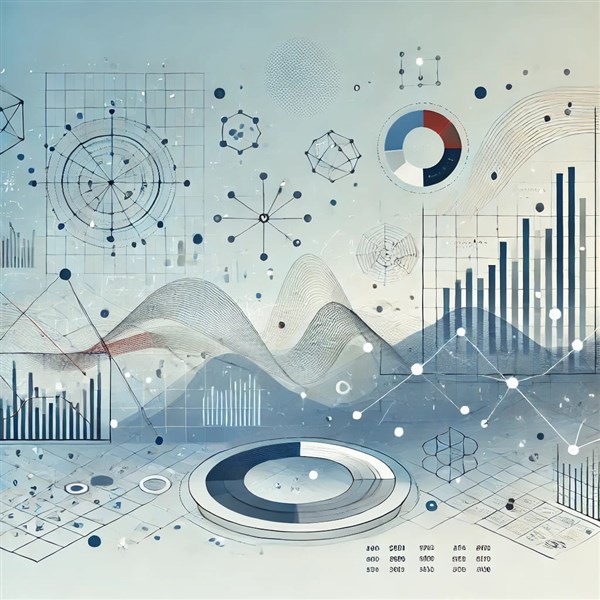
As industries across the globe become more data-centric, the demand for professionals skilled in data analysis and interpretation has soared. Whether you're in marketing, finance, healthcare, or tech, a robust understanding of data analytics can significantly boost your career prospects. Analytics courses equip students with an array of high-demand skills, from data visualization to predictive modeling, empowering them to make data-driven decisions and foster business growth.
In this blog, we’ll break down the essential skills you’ll gain from an analytics course, explore how they’re used in real-world scenarios, and highlight why they’re so important in today’s job market.
Skills You’ll Gain from an Analytics Course
1. Data Visualization: Turning Data into Insights
One of the most powerful skills you'll gain in an analytics course is data visualization. This skill involves presenting data in graphical or pictorial formats that are easy to understand, allowing for quicker interpretation and more effective communication of insights.
Key Techniques in Data Visualization:
- Charts and Graphs: From pie charts to scatter plots, using the right chart for your data type helps reveal trends and patterns.
- Dashboards: Dynamic dashboards combine multiple visual elements, such as bar graphs and KPIs, enabling real-time data tracking.
- Storytelling with Data: An essential part of data visualization is creating a narrative around the data. With storytelling, you’ll learn to guide audiences through complex data findings.
Tools for Data Visualization: Common tools you’ll learn include Tableau, Microsoft Power BI, and Google Data Studio. These tools make it easy to transform raw data into visually appealing and interactive charts, which are crucial for reporting to stakeholders or executives.
Why It Matters: Visualizing data improves accessibility and understanding, making it a valuable asset for businesses looking to leverage data for strategic decision-making.
2. Statistical Analysis: Understanding Data Patterns
Statistics are the backbone of data analysis, providing the mathematical foundation for extracting meaning from raw data. An analytics course will cover essential statistical techniques, teaching you how to apply them in real-world scenarios.
Core Statistical Skills:
- Descriptive Statistics: This involves summarizing data, typically with measures such as mean, median, and mode.
- Inferential Statistics: These techniques, like hypothesis testing and regression analysis, allow you to make predictions or inferences about a larger population based on sample data.
- Correlation and Causation: Understanding the relationships between variables is crucial. You’ll learn to identify if variables are correlated and how to avoid making misleading assumptions about causation.
Why It Matters: Statistical analysis skills are critical for making evidence-based decisions, helping businesses identify trends, forecast outcomes, and optimize processes.
3. Predictive Modeling: Anticipating Future Trends
Predictive modeling takes data analysis to the next level by using historical data to predict future outcomes. This skill is highly valuable across industries, allowing businesses to anticipate trends, reduce risks, and seize opportunities.
Techniques in Predictive Modeling:
- Regression Analysis: A statistical method that estimates the relationships among variables, often used to forecast sales, market trends, or customer behavior.
- Machine Learning Algorithms: Techniques such as decision trees, neural networks, and random forests are part of advanced analytics, enabling systems to learn from data without human intervention.
- Time Series Analysis: Often used in finance and economics, time series analysis tracks data points over time to detect patterns and predict future values.
Tools for Predictive Modeling: Python libraries like scikit-learn and TensorFlow, as well as R, are widely used for predictive modeling. You’ll learn how to code and apply these algorithms to your datasets, creating models that can offer actionable insights.
Why It Matters: Predictive modeling enhances a company’s decision-making process by allowing leaders to plan for future scenarios, adapt quickly to market changes, and create a competitive advantage.
4. Data Cleaning and Preprocessing: Ensuring Data Quality
Before any analysis can occur, data must be cleaned and organized—a process known as data cleaning or data wrangling. In an analytics course, you'll develop techniques to handle missing data, correct inaccuracies, and standardize formats.
Key Data Cleaning Techniques:
- Handling Missing Data: Strategies like imputation, mean substitution, or removing incomplete data points to ensure integrity.
- Data Transformation: Changing data to the required format for analysis, such as scaling, encoding categorical variables, or creating dummy variables.
- Outlier Detection: Identifying and managing data points that differ significantly from others, which can affect analysis results.
Why It Matters: High-quality data is the foundation of reliable analytics. Data cleaning skills ensure that your analysis is accurate, consistent, and trustworthy, ultimately leading to better outcomes for businesses.
5. Programming Skills: Mastering Python and SQL
Most analytics courses introduce students to fundamental programming languages like Python and SQL. These languages are essential for manipulating data, performing complex calculations, and automating repetitive tasks.
Programming Languages in Analytics:
- Python: Known for its versatility and simplicity, Python is a popular choice for data analysis and visualization. Its libraries, such as Pandas, NumPy, and Matplotlib, are widely used in the analytics industry.
- SQL (Structured Query Language): SQL is essential for interacting with relational databases. In an analytics course, you’ll learn how to query databases to extract, filter, and manipulate data.
Why It Matters: Programming enables you to work directly with large datasets and develop custom analyses. These skills are fundamental for data-driven roles, allowing you to extract insights that are not accessible through basic analysis tools.
6. Data Ethics and Privacy: Navigating Legal and Ethical Boundaries
Understanding the ethical and privacy implications of data usage is becoming increasingly crucial in today’s data-centric world. Analytics courses often cover best practices for handling data responsibly, ensuring compliance with regulations such as GDPR or HIPAA.
Key Concepts in Data Ethics:
- Privacy: Learning about consent, data protection laws, and the need to anonymize sensitive information.
- Bias and Fairness: Understanding how to identify and mitigate biases in data analysis and predictive models to ensure equitable outcomes.
- Transparency: Being clear and open about data collection and usage practices, which builds trust with consumers and stakeholders.
Why It Matters: Data ethics isn’t just a legal requirement; it’s an ethical commitment that ensures the integrity and trustworthiness of analytics work. Mastering data ethics helps safeguard an organization’s reputation and complies with increasingly stringent data privacy laws.
Final Thoughts: Investing in an Analytics Course
An analytics course offers invaluable skills that are highly relevant across industries. From data visualization and statistical analysis to predictive modeling and ethical data handling, these capabilities empower professionals to become data-driven decision-makers. Whether you're aiming to shift into a data-centric role or enhance your current position, mastering these skills can significantly boost your career trajectory and open doors to new, high-demand opportunities.
Analytics is more than just crunching numbers; it’s about deriving meaningful insights that drive business growth. With a well-rounded understanding of the skills above, you'll be well-equipped to tackle complex data challenges and help shape the future of your organization.







COMMENT